"We're going on a trip in our favourite rocket ship, zooming through the sky, JELLYFISHES!!" sang the Jellies as they were cruising in space.
These are our tasks for the week. By the end of this we hopefully have a landing site to aim for, at least that's the goal.
1. Get close to destination planet
2. Orbital injection maneuver
3. Stable orbit
4. Descend
5. PHOTOSHOOT!
Numero uno: Get close to Lajaland, our destination planet.
Why do we need to get close to our destination? To perform an orbital injection maneuver. The concept is explained in details here: "THINGS YOU WISH YOU KNEW B4 YOU LAUNCHED".
TLDR (too lazy didn't read); it's simply the process of establishing a stable orbit around a planet, from a starting position in space.
We do this by getting close enough to the point where the gravitational pull from Lajaland is greater than the gravitational pull from Calcifer. This distance is given by the equation \(l = |\vec{r}|\sqrt{\frac{M_p}{10M_s}}\) (the equation is also introduced and deduced in "THINGS YOU WISH YOU KNEW B4 YOU LAUNCHED"). Now I could have calculated this distance l for you, but I have a computer doing this for me and they (yes, my computer is non- binary) said:
Upper distance limit is 8.72883e+06 m
To get close enough to Lajaland we need to simulate and plan for boosts. This plan describes the path we are planning to take in order to get from Chichiyaku to Lajaland and what boosts are needed to correct the path along the way. Here's the catch... Do we know where Lajaland is at any given time? No. Was our time of launch a smart choice in order to aim for Lajaland? Nope, just a guess. Do we even have a plan for boosting? Not even remotely close. Great! We are going for the good ol' hoping for the best :) you know, trial and error.
The voyage looks something like this:
Step 0:
\(\text{time = 1.2 year}: \text{Boost $\Delta{v} = (0.02, 0)$AU/yr}\)
\(\text{coast for 0.4 year}\)
Step 1:
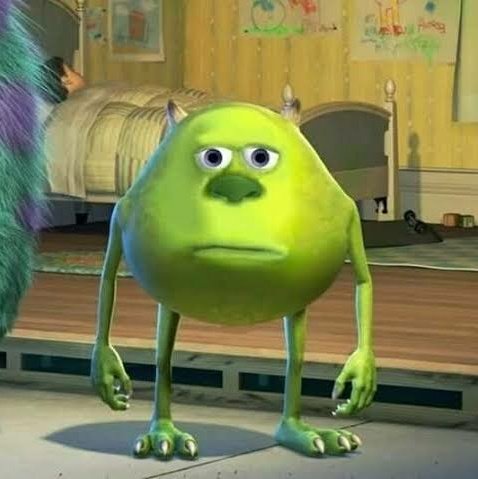
\(\text{time = 1.6 year}: \text{Boost $\Delta{v} = (-1, -2)$AU/yr}\)
\(\text{coast for 0.1 year}\)
\(\text{Distance from Lajaland} = 1.7\cdot 10^{10}\text{m}\)
Step 2:
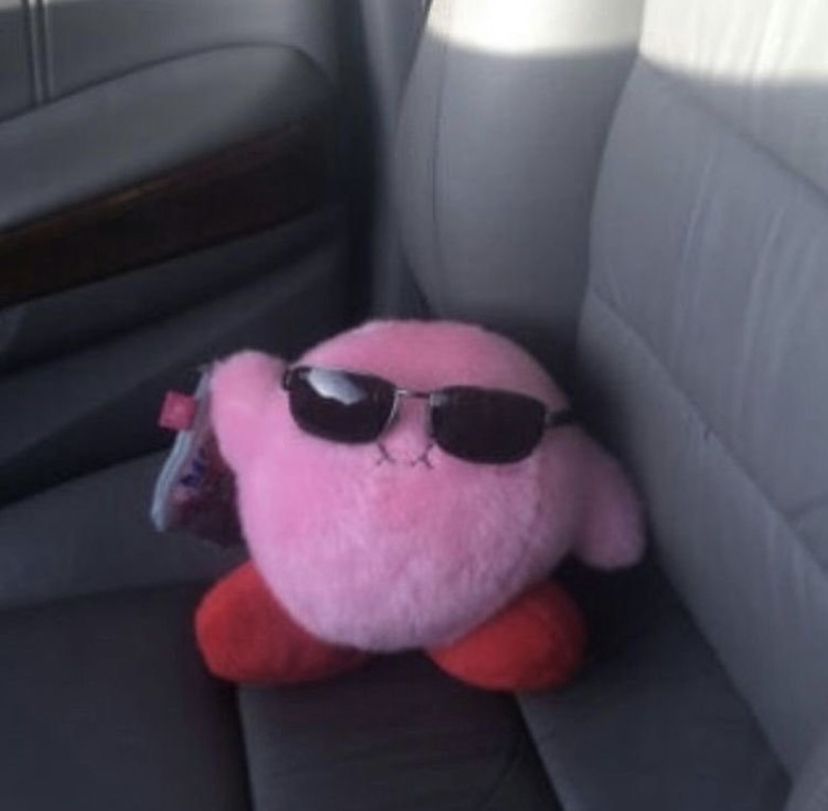
\(\text{time = 1.7 year}: \text{Boost $\Delta{v} = (1, 2)$AU/yr}\)
\(\text{coast for 0.1 year}\)
\(\text{Distance from Lajaland} = 3.4\cdot 10^{9}\text{m}\)
Step 3:
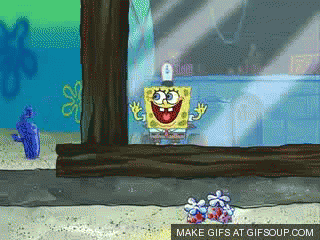
\(\text{time = 1.8 year}: \text{Boost $\Delta{v} = (1, 5)$AU/yr}\)
\(\text{coast for 0.01 year}\)
\(\text{Distance from Lajaland} = 2.9\cdot 10^{9}\text{m}\)
*A couple hours later*
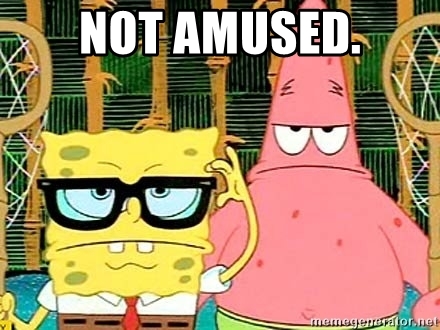
\(\text{time = 1.81 year}: \text{Boost $\Delta{v} = (-5, -2)$AU/yr}\)
\(\text{coast for 0.1 year}\)
\(\text{Distance from Lajaland} = 6.3\cdot 10^{9}\text{m}\)
Okeeeeyyy... so we did not successfully get close enough... \(2.9\cdot 10^9\text{m}\) at its closest...
What a surprise considering how clueless we went into this (ps. trying and failing doesn't always work)... AND I'VE BEEN PUSHING BUTTONS FOR THREE HOURS trying to make this work. I shall keep on moving instead.
Numero dos: Orbital injection maneuver
We did just discuss the fact that we need to be close enough to Lajaland in order to perform an orbital injection maneuver. Did we close enough? Nope... Does it mean we cannot perform a orbital injection maneuver? Yes... okeeyyyy next!!
Numero tres: Stable orbit
WE COULD NOT GET CLOSE! SO WE CANNOT PERFORM ORBITAL INJECTION MANEUVER. MEANING WE DON'T HAVE A STABLE ORBIT AROUND LAJALAND. FUCK!!
Let me at least tell you what a stable orbit because this is very important for when we want to enter a lower orbit.
From figure 6.5 the rocket could either have a circular orbit around Lajaland (case A) or elliptical orbit (case B). If you already read the image text, you know A resembles a stable orbit. But why?
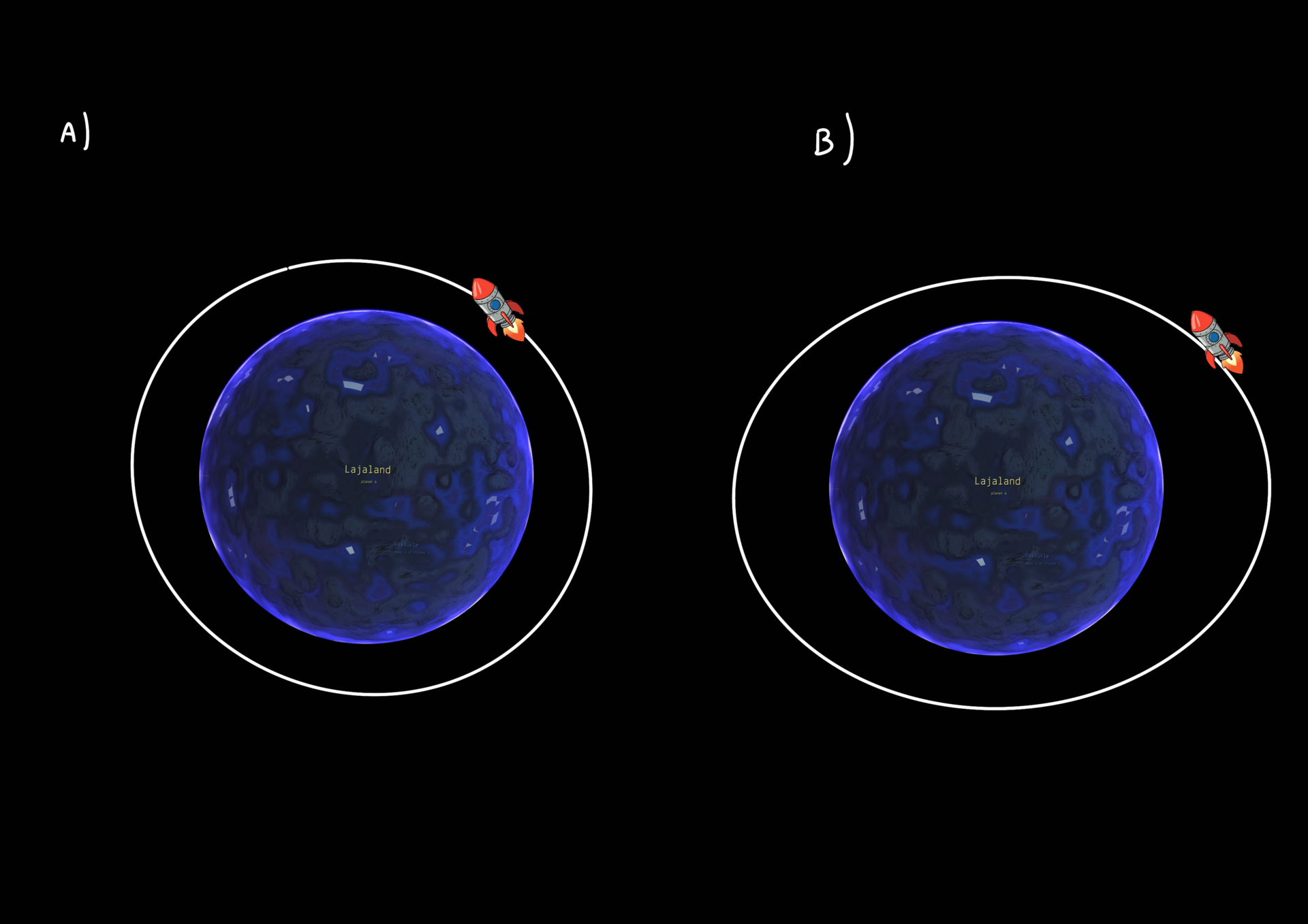
In a stable orbit, the rocket keeps the same distance to the planet center all around its orbit. The consequence of is the rocket's velocity remaining constant.
In B the velocity varies. If you remember from Kepler's second law: "Planets orbit faster near the sun in order to sweep the same area when it is further away" (in this case not the sun, but the planet. Same concept though)
What does velocity of a (un)stable orbit have to do with achieving a lower orbit? Well it has something to do with how you achieve the lower orbit :)
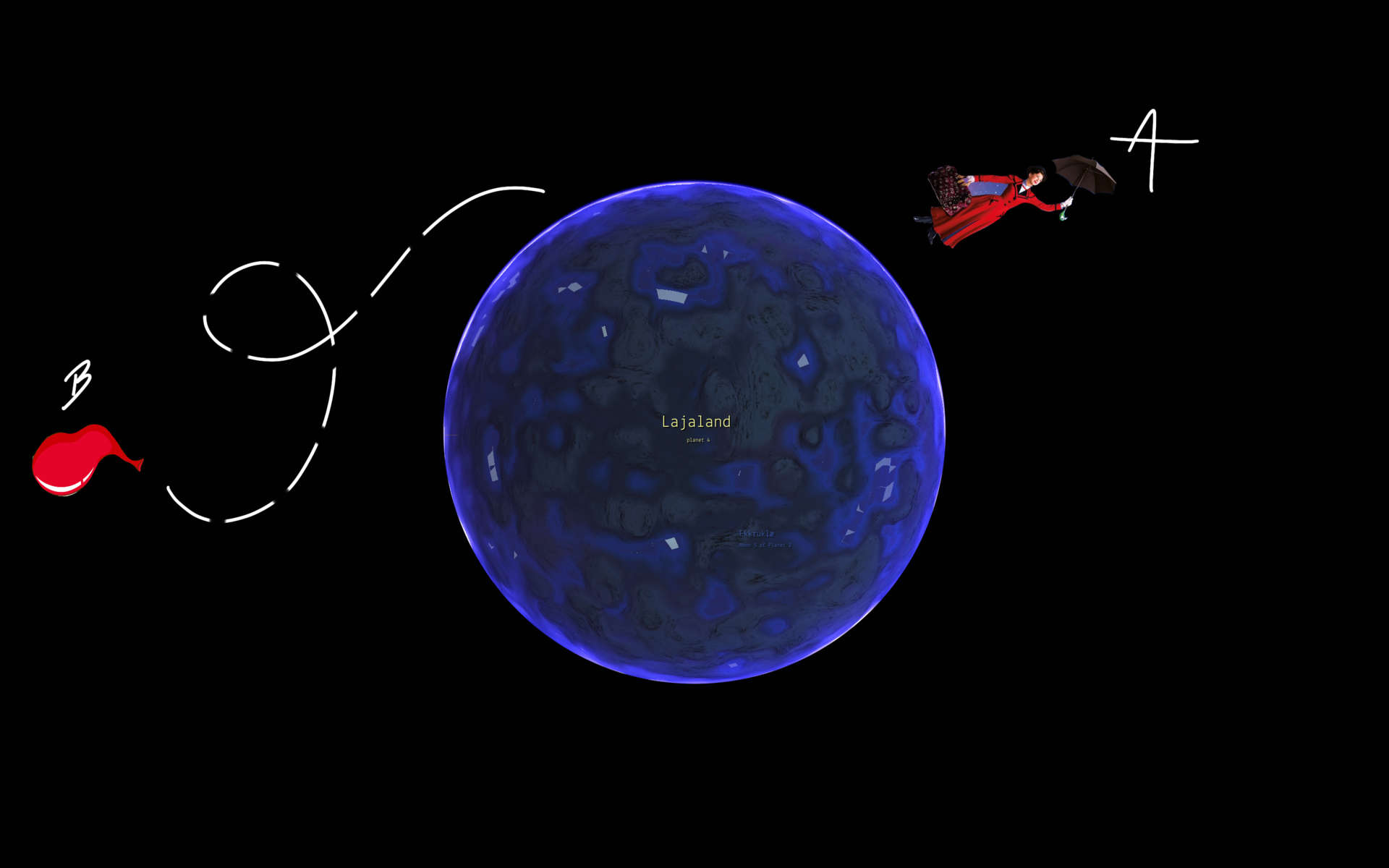
If you are Mary Poppins (who has a stable circular orbit), you can decrease your velocity relative to planet center and gracefully fall down. Ps. I really don't know anything about Mary Poppins. I just assume she uses her umbrella to fall gracefully down. I could be wrong.
However, if you are a balloon in an unstable elliptical orbit you have varying velocity depending on where you are. Which makes decreasing of velocity harder because you have to take both x and y direction at different times into consideration, ugh. You've tried to blow a balloon and release it? Yes, it flies in every possible direction. We want to avoid that for our rocket :)
Who do we want to be???
Rebecca and Karl: Mary Poppins!!
How to check if orbit is stable? If you remember, the criteria for a stable orbit is a constant distance between the rocket and Lajaland's center. So you check the distance between rocket and planet center at different times throughout the orbit. If it remains the same then we have achieved a stable orbit.
Numero quatro: Decend
We wish to get in a lower (stable) orbit around Lajaland to get videos and photos. A lower orbit means our spacecraft will circulate around Lajaland with a shorter distance to the center than before. Basically get close enough to actually see anything on the surface, but not so close that the atmosphere sucks us like Kirby. The media will be used to scout for landing sites and just have many pretty pictures to show our grandjellydaughters and sons.
Karl: For this part we need some help. Oooohhh Genie Nils?
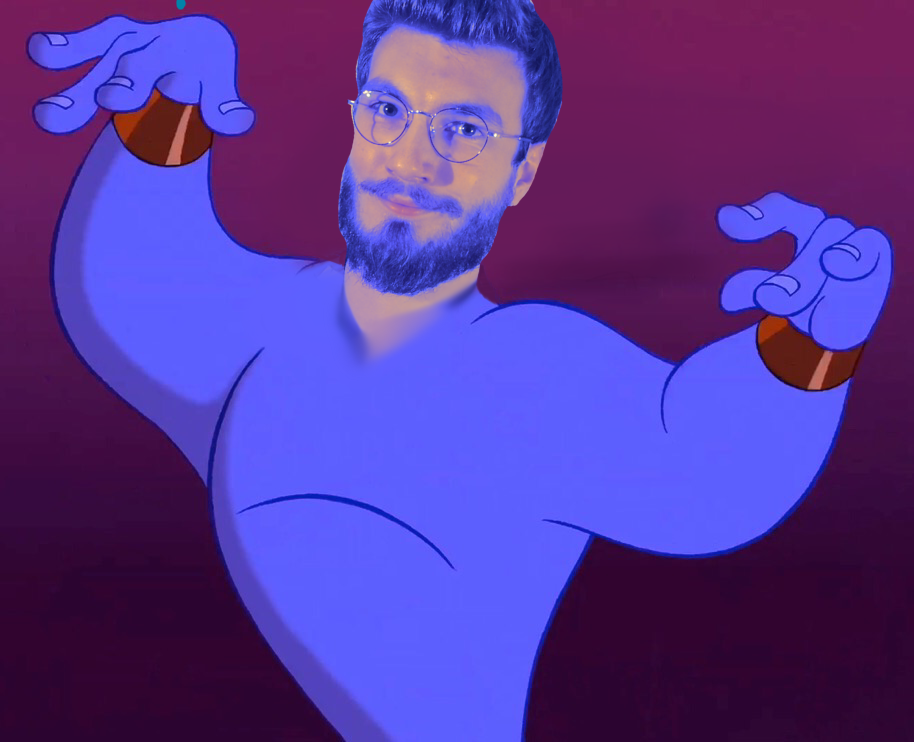
Genie Nils: You have summoned me. I shall give you three wishes. However, you are not allowed to wish for more wishes, create or end lives and you cannot make someone fall in love with you.
Rebecca: We wish to be close to our destination planet, perform orbital injection maneuver and achieve a stable orbit around Lajaland.
Genie Nils:
From a conversation between Karl and Rebecca about this video
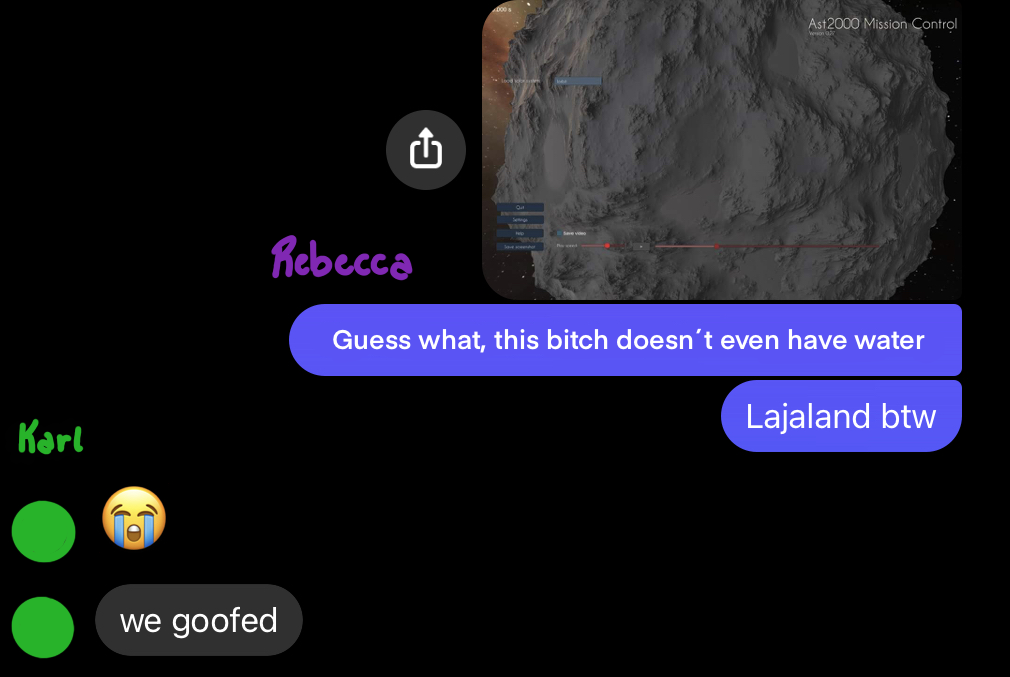
Turns out we never specified to Genie Nils WHICH planet we wanted to get close to... heh ops. We got placed around rocky planet Bidd instead of Lajaland. However, the adjustment was a quick fix.
WELCOME TO LAJALAND!
So how do we achieve a lower orbit? Well there are two options.
1. Boost straight down towards planet
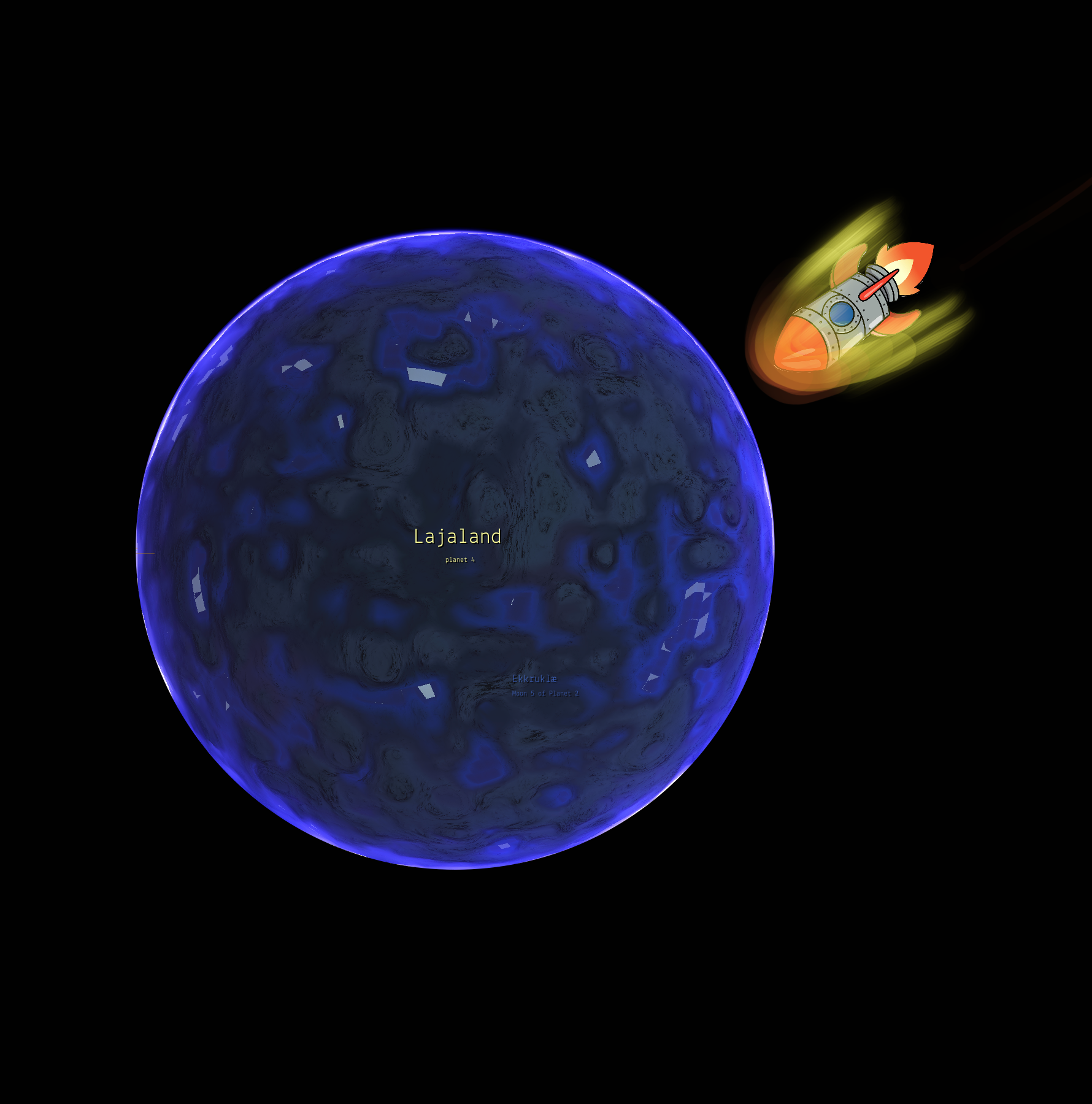
FAILURE:Orbital decay of the spacecraft due to air resistance at time 1435.97s!
Sooooo... uhm while trying to get closer to Lajaland our spacecraft got destroyed due to high friction in the atmosphere. Who would have thought the atmosphere is almost like Kirby or something? Anyways, we'll talk about atmosphere later on.
2. Decrease velocity and fall
So this is the best alternative to get in a lower orbit which was also discussed in "THINGS YOU WISH YOU KNEW B4 YOU LAUNCHED".
If you are too lazy to read the link, you are in luck. I just copy-pasted the relevant part down below.
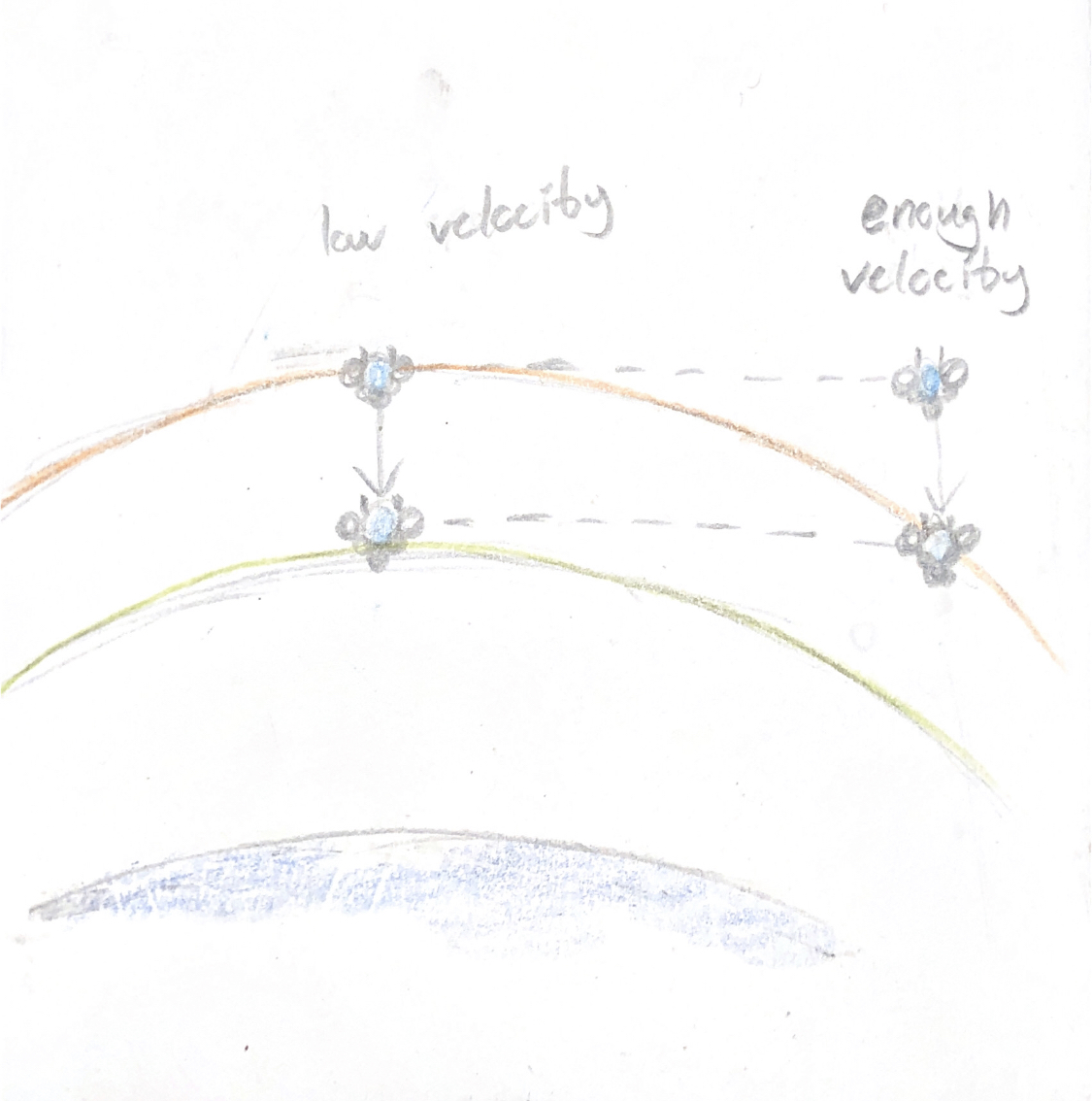
"After this is said and done, we need to make sure our horizontal velocity, compared to the planet surface, is great enough to maintain a stable orbit. If you look at the picture the spacecraft with the correct velocity will move far enough to the side to where its fall lets it stay the same distance from the surface. While the other is not moving fast, and will lose altitude, as represented by the green ring. Put simply we're trying to fall sideways as fast as we're falling downwards."
Ps. we already did it in the video above of Lajaland.
We did it by sending a command to our spacecraft to boost in negative direction relative to planet center. Meaning we decrease the velocity so we fall towards the planet.
Numero cinco: PHOTOSHOOT!
Now the time has come to scout for a new home. We want to land in the ocean, I mean we are jellyfishes so duh. Let's have a photoshoot with Lajaland aka. grab a bunch of pictures:
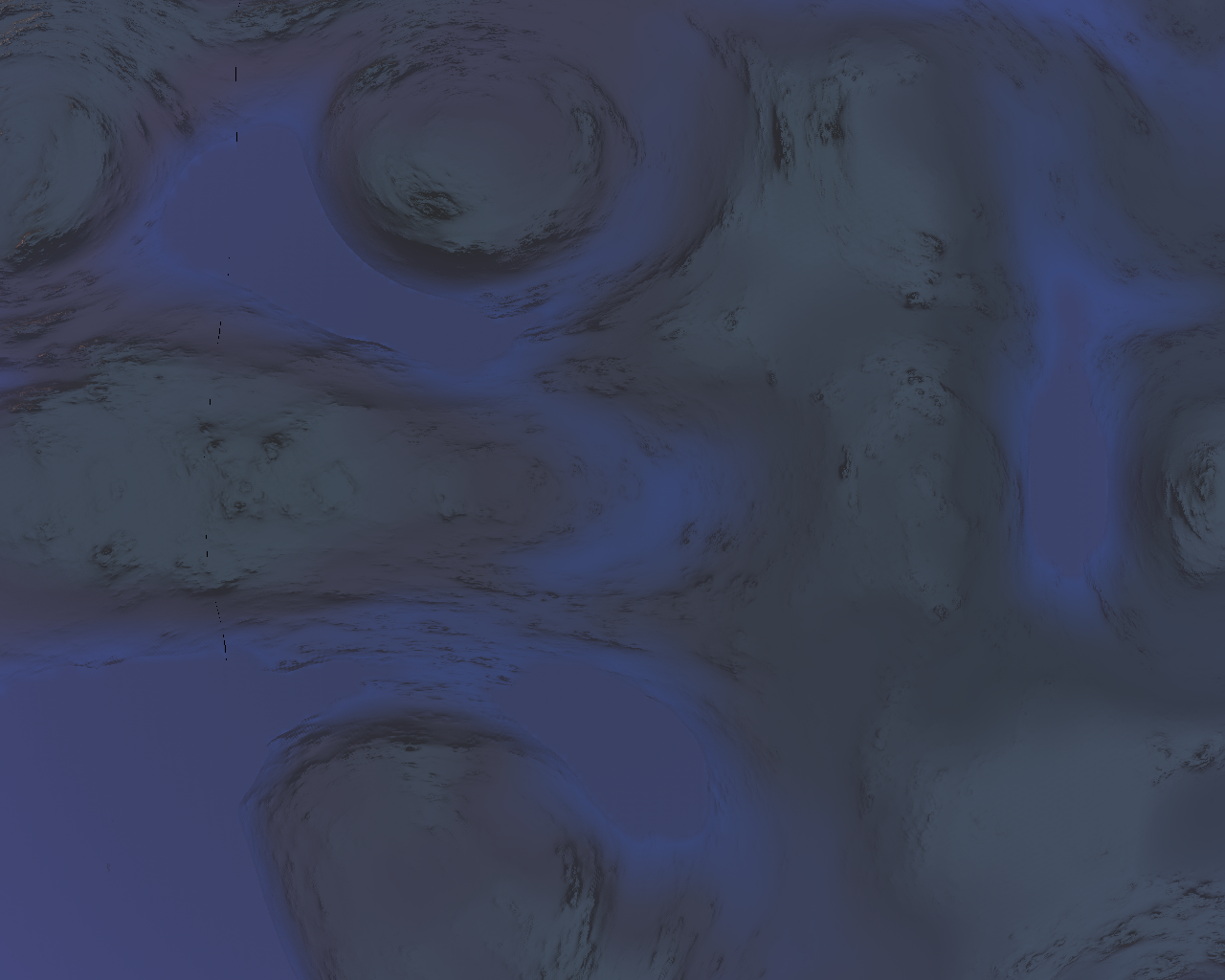
Hmmmm... too mountain-y.
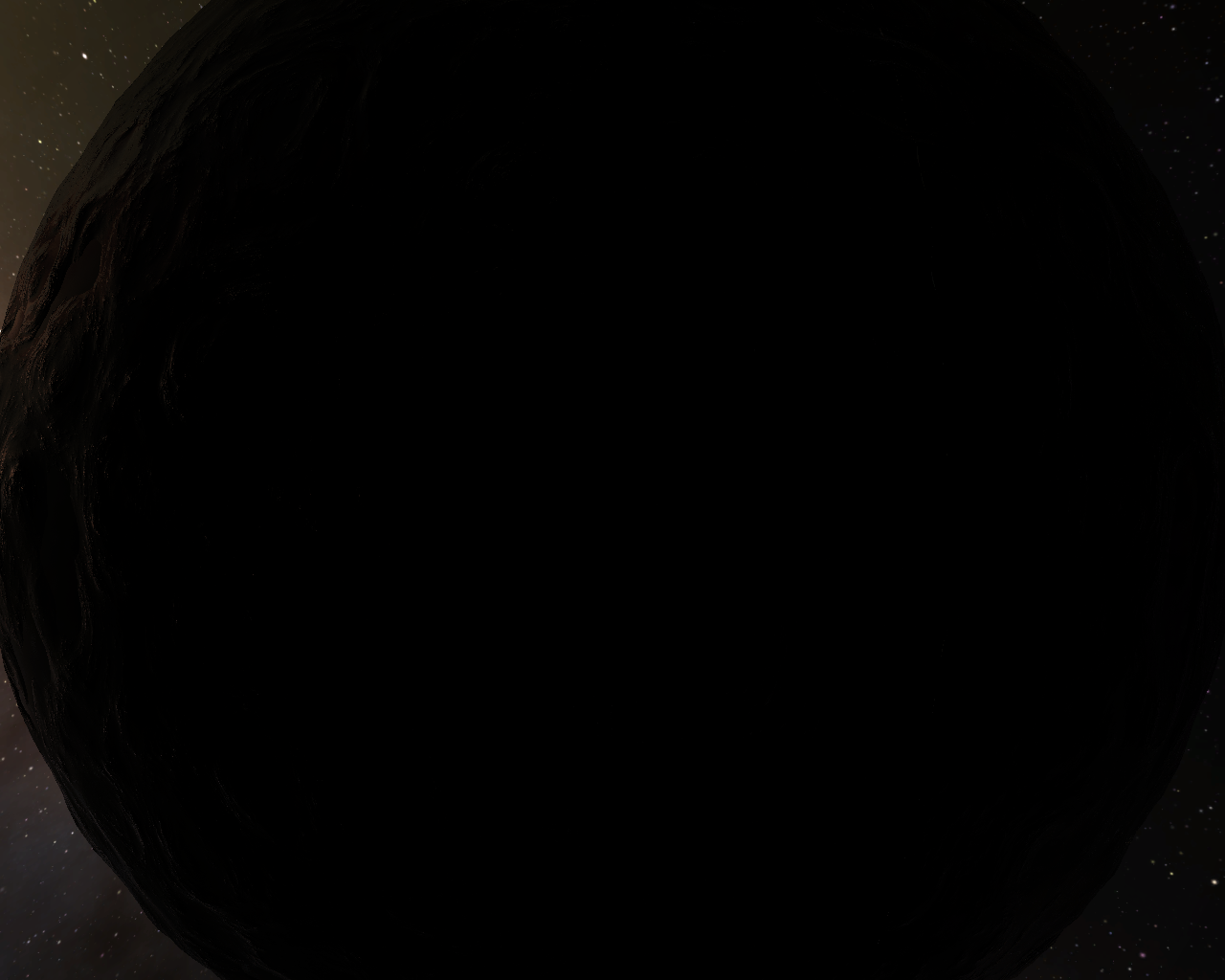
Where even is this?? I can't see anything. Maayyyybee we should just avoid landing on the night side.
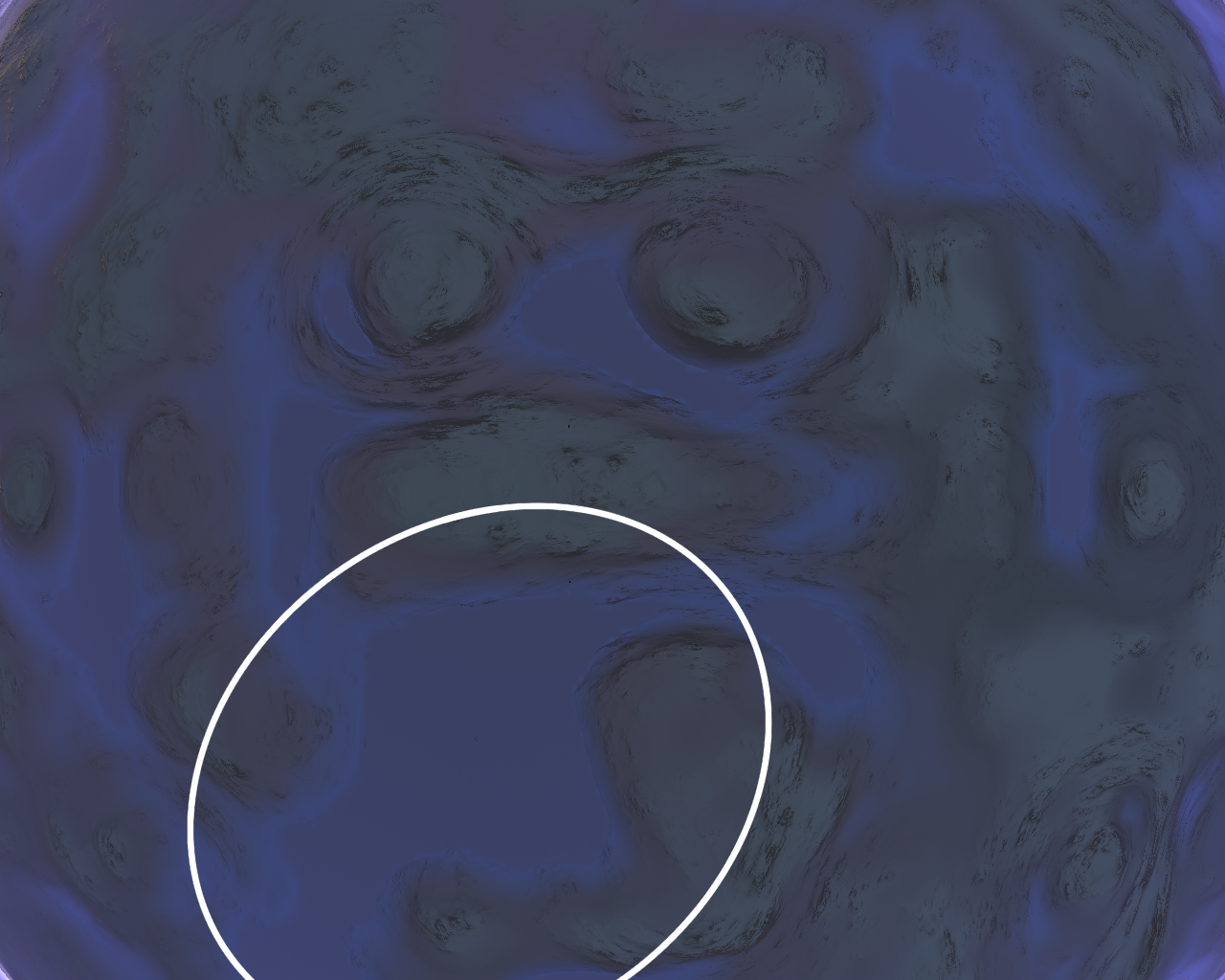
Mmmmm, look at that juicy long patch of water! We like this
Computer, what are the coordinates of our spacecraft relative to Lajaland for this position?
Time: 1100 s Position: (1.90043e+06, 776255, 0) m
Someone scientist told us that introducing the z-axis will in general lead to more complex commands. So that is why we are avoiding anything in that direction.
Great! So this must the position we are aiming for at Lajaland in order to land?
ÆÆÆ WRONG. Why?
First of all, these coordinates are for rocket position relative to planet Lajaland. We need to use this information in order to find coordinates of landing site that are ON THE PLANET. Before I do so, I have some assumptions to be made.
1. If you look at the picture of potential landing site... you may have noticed we are not completely above the site. To make my calculations easier... please assume our rocket is right above landing site :)
2. We place coordinate system with planet center in origin.
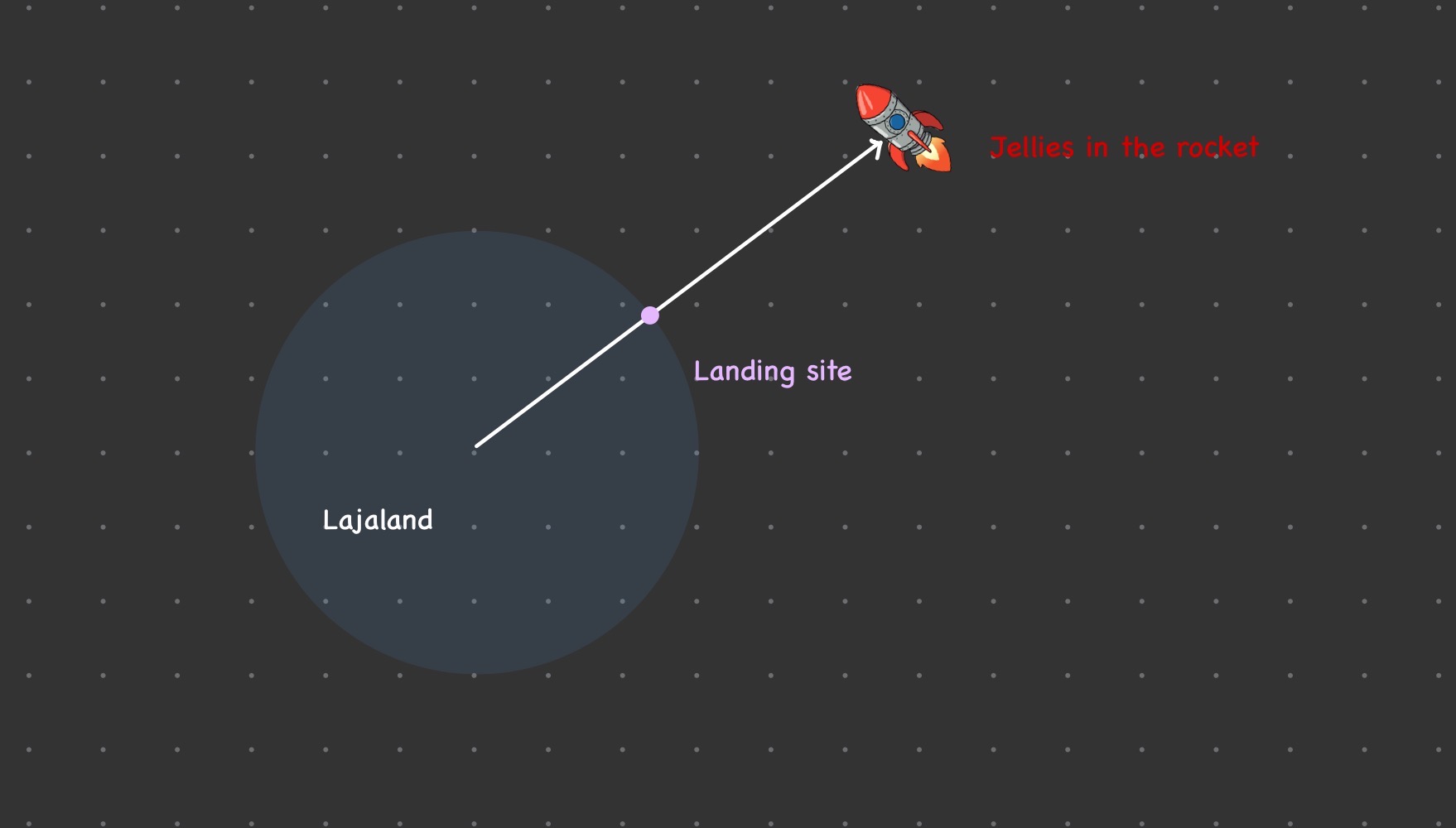
We notice the vector from planet center to us in the rocket ship, has the same direction as planet center to landing site. We will therefore use coordinates of our spacecraft relative to Lajaland and transform it to a unit vector to get the direction of our potential landing site. Then we will multiply the unit vector with planet radius in order to get the magnitude of the vector. This will produce the vector which is the white line on figure 6.12 from planet center to purple dot. (This is allowed because we assumed the spacecraft is right above landing site).
Mathematically it will look like this:
\(\text{landing site coordinates} = \frac{\vec{position}_{\text{rocket}}}{|\vec{position}_{\text{rocket}}|} \cdot radius_{Lajaland} \tag{1}\)
(This will be calculated further down on this page).
Great, so now we finally have landing site coordinates!
ÆÆÆ WRONG (again). Why (again)?
Due to the spin of planet (Yes, planets spin around their own axis in addition to orbiting the sun. That is why we have seasons, remember?) the coordinates of landing sites changes over time. So in order to calculate the actual coordinates of potential landing site we have to use its current coordinates as a function of time elapsed. It is hard to explain with just words, so here's a sheet of our jelly kids' homework.
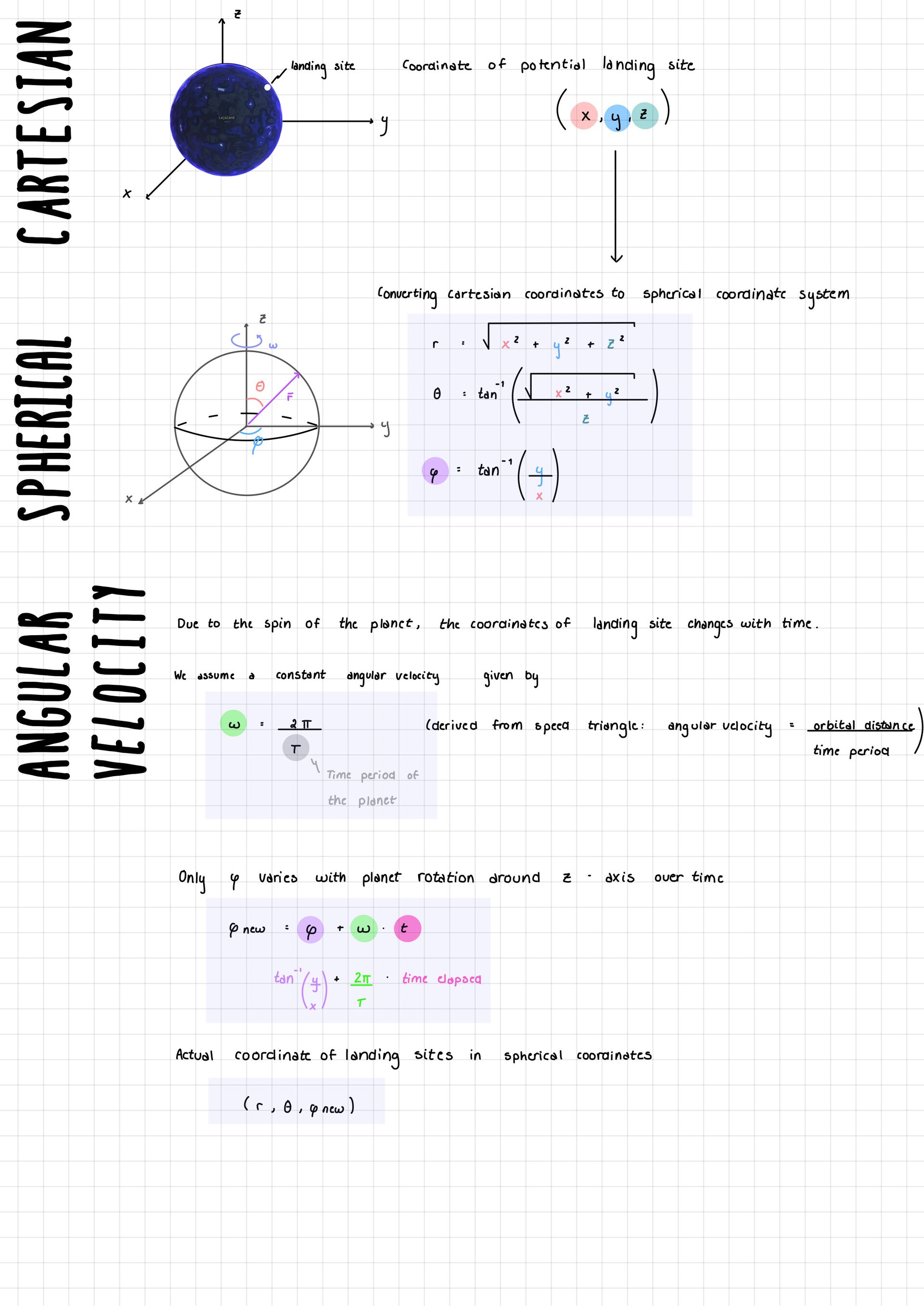
Notes:
- Angular velocity is what causes our planet to spin in z-direction.
- Both \(\phi\) and \(\omega\) moves in same direction. That is why only \(\phi\) is affected by the planet's spin.
Rebecca: Time to calculate
Karl: TO THE COMPUTER!
Planet radius: 1528.529 km Unit vector of rocket position: [0.92575059 0.3781347 0. ] Landing site coordinates: [1415.03646575 577.98978743 0. ] km Actual landing site coordinates [-2.80579909e+01 -1.52827129e+03 9.35953971e-14] km Distance between planet center and landing site is 1528.5288331557408 km
Okey a lot to unpack. We'll do this line by line:
Planet radius is straight forward. Given in km.
Unit vector of rocket position gives us the direction of the rocket position in this moment.
Landing site coordinates is cartesian coordinates of... well landing site. Without taking the planet's spin into consideration. Deduced in equation (1)
Actual landing site coordinates is well... actual cartesian coordinates of landing site with planet's spin taken into consideration after our rocket had elapsed for 1100 seconds (deduced in figure 6.13). I don't know about you, but the vector looks very... greek?? Like I don't quite understand what it is telling me. This brings us to the last line.
Distance between planet center and landing site. This distance is the magnitude of the vector giving landing site coordinates. The reason I included this was to see if the vector pointing from the origin to landing site was on Lajaland's surface, if it made sence. In a way it is a criteria because we can't land inside Lajaland or in space. It has to be on the planet surface.
We see the landing site is almost equivalent to planet radius meaning calculated landing site coordinates are on planet surface. Wooop! This distance will most likely have small deviations from planet radius because of variations in altitude caused by mountains, sea level and so on.
